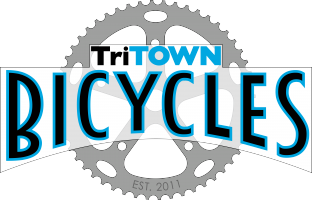The Tri Town Times: 2/17/20
- Posted on
- By Antonio Gonzalez
- Posted in the tri town times
- 1

New 5k World Record; We Host Our Second Seminar Titled, "Heart Rate Training for Endurance Athletes"; E-bike vs Tri Bike vs Road Bike - Which is Faster on Boise's 'Dump Loop'; 50 Ironman in 50 days - Iron Cowboy Documentary.
Weekend Race Report:
Ugandan runner Joshua Cheptegei destroyed the 5k world record by 27seconds on Sunday at the Monaco Run 5k. The full video of the race is amazing to watch, especially considering Joshua is averaging a 4min 8sec per mile pace.
Events We're Looking Forward To:
Thank you to everyone who attended our first seminar of the season last week- the turnout was great and ensuing discussion was fascinating.
We continue our seminar series tonight with "Heart Rate Training For Endurance Athletes." Join us at 5:30pm tonight at the shop for another free and informative evening. Please RSVP [email protected]
Training Thoughts and Updates:
- One of the most hilly loops in our city is the "Dump Loop": 17 miles and over 1,400 feet of climbing. I conducted an interesting comparison to see which type of bike is faster on this punchy loop: an aero road bike, a triathlon bike, or a road e-bike. The results were a mix of predictable and surprising. Read all about it on our blog.
- Swimming is often the greatest barrier to entry for adults looking to get into triathlon. I often say swimming has more in common with golf than with biking or running. To make it more confusing, the stroke technique that works for one athlete may not work for another. In my opinion the trick to swimming well is being open minded to a variety of styles and techniques, try things out, and come to your own conclusions. For example, here is a pretty stroke that many of us would love to emulate. Yet here is the stroke of one of the fastest swimmers in triathlon. There are some obvious differences, but also a few key similarities: high body position, good rhythm/timing, light/narrow kick, and they're swimming the same speed. Remember what happens above the water is less important than what happens under the water, and ultimately you need to experiment and find what works best for you.
Popular Social Post:
There was a lot of affection being thrown around on Valentine's Day, but nothing compares to the love between a boy and his bike.
Quote that Struck a Chord:
"A high tolerance for monotony is an underrated super power." - James Lawrence, The Iron Cowboy
If You Have a Moment to Spare:
I finally got around to watching the Iron Cowboy documentary on Netflix. It's a conflicting story, and I left doubting his motivation and methods for completing 50 Ironman distance workouts, in 50 days, in 50 states. Nonetheless, there is little doubt in my mind that his accomplishment is one of the greatest endurance feats of all time, and a true testament to his quote above.

Antonio,
Some thoughts on swimming after seeing your letter today:
Swimming- the videos both show swimmers who know what they are doing. While there is a slight style difference the technique under water is similar. Harry is certainly sloppy on top of the water and reminded me of somebody I swam with in high school, Olympian Janet Evans. Every coach who saw her cringed and thought they could “fix” her stroke. Until they saw her under water. I would say Harry follows the triathlon high cadence method which has the advantage of being harder to knock off rhythm by waves or contact with other athletes but looses the efficiency (I estimate 10-20% depending on swimmer) gained by the long and strong swimmer. Harry also has poor head position, dropping his eyes 15 degrees will raise his hips and reduce his drag.
Long and strong in the effortless swimming video has a slight shrug of his shoulder forward as he catches the water and full extension at the end of his stroke slightly reducing his profile going through the water. While it looks smoother in the video I can tell you from experience he is exerting more power (watts if you will) per stroke.
If I were to make a generalization I would say the shorter the arms the higher the cadence should be. Ideally an athlete should be able to do both strokes. If in clean water conserve energy and go long and strong. In the crowd, higher cadence is helpful because a bump doesn’t throw them off.